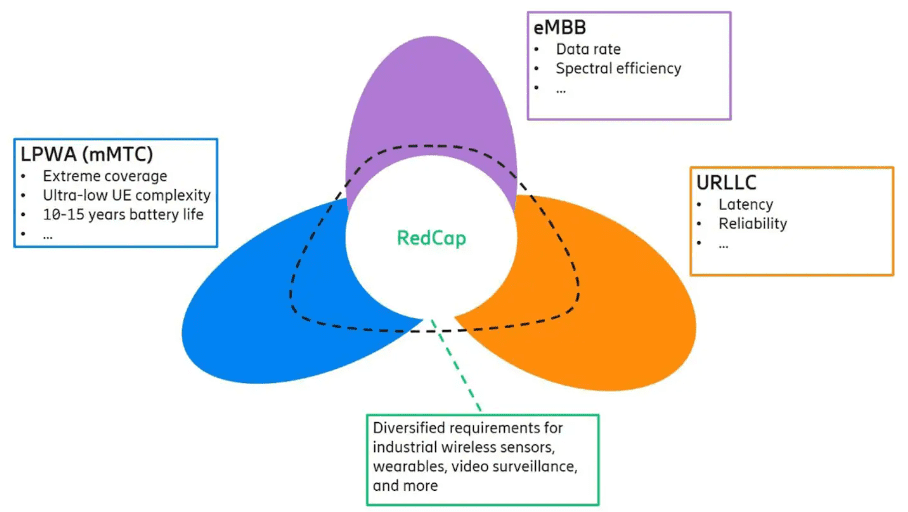Ericsson has announced a radio access network (RAN) software upgrade for standalone 5G NR (5G SA) systems which offers reduced capability (RedCap) 5G features to lower hardware complexity, extend battery life, and support a range of mostly-IoT based use cases, notably involving wearables, video monitoring equipment, and industrial sensors. The new software solution will be available from November (2023).
RedCap is a loose part of the Release 16 feature set for 5G NR networks, just coming into the market; however, it will be greatly enhanced with Release 17, frozen in March last year (2022), which further standardises key RedCap features. Release 17 is pegged for initial commercial release in the first half of next year (2024). Ericsson, which is preempting the market with its release, called RedCap the “next wave of 5G”; its new release rides this wave, it said.
The timing, ahead of the game, will “foster an early ecosystem for the next wave of 5G”, it stated. The new software release works on the same 5G NR hardware already deployed by its mobile operator customers; it is available exclusively for Ericsson-based 5G macro networks. It added: “RedCap will strengthen the ecosystem for new types of devices that can be connected to 5G networks.”
Ericsson continued: “Ericsson RedCap will support leaner procedures for optimising device energy consumption and enable wearables that are currently only available with LTE devices. With the new 5G RAN software solution, communications service providers can offer more connectivity options for diverse consumer and enterprise use cases and in industrial settings on the FDD (frequency division duplex) and TDD (time division duplex) spectrums.”
Ostensibly, RedCap sits somewhere between IoT-geared LTE-M and broadband-style LTE in the cellular hierarchy. Writing in August last year, leaning on an Ericsson infographic, RCR Wireless said: “5G RedCap, previously called ‘NR-Light’ (and variations-thereof, in 3GPP work items), sits provisionally between massive machine-type comms (MTC) and enhanced mobile broadband (eMBB) in the 5G NR power hierarchy.
“To add context; it sits two rungs below URLLC, affording the headiest view of IoT comms, in this 3GPP ladder – which is most commonly presented, actually, as three points in a 5G NR family triangle. The thing about these three specification-types, however, is that only two are 5G-native. The twin low-power wide-area (LPWA) technologies underpinning mMTC, the massive (machine-type) IoT segment, are LTE-based, albeit compatible with 5G NR radios.”

The article continued: “And only these technologies, ultra low-power NB-IoT and 2G/3G-like LTE-M, offer support for stripped-back, dirt-cheap, long-life, mega-scale IoT. So, as it stands, and going forward, cellular IoT needs LTE to make a fist of traditional IoT, at all – and it has a fight on its hands with well-entrenched non-cellular standards like LoRaWAN in unlicensed bands. But RedCap promises to fix that – somewhere down the line, as always with cellular.
“RedCap is designed, ostensibly, to make this familiar triangle of 5G NR family-tech into a venn diagram (see above), where it overlaps with the other three operating scenarios.”
In its news announcement, Ericsson explained: “RedCap [bridges] the capability and complexity gap between low-power wide-area (LPWA) and ultra-reliable low latency communications (URLLC) uses in existing 5G settings, with an optimised design for mid-tier use cases. [It] can effectively scale down the complexity, size and capabilities of device platforms to offer cost-efficient integration into devices such as wearables and industrial sensors.”
Ericsson said it is working with “leading chipset vendors” to bring “multiple types of 5G devices to the market”; it quoted MediaTek in its news statement, saying: “MediaTek’s upcoming solutions supporting 5G RedCap will certainly benefit from Ericsson’s infrastructure readiness, ensuring that operators, consumers and businesses can immediately benefit from the next generation of innovative 5G products and services.”
David Hammarwall, head of product area networks at Ericsson, said: “Ericsson RedCap will open up a new world of possibilities for new types of devices that do not require the full range of 5G’s capabilities. The RedCap software will enhance 5G connectivity for everything from consumer wearables to industrial sensors in a way that is both cost- and energy-efficient, unlocking a whole range of new use cases.”
Verizon was also quoted. Bill Stone, the company’s vice president for technology planning, commented: “5G is designed fundamentally as a highly customizable service. The evolution of NR RedCap from Ericsson, coupled with the advanced technologies deployed throughout our 5G network, will serve to bring that customization to life for a variety of devices, allowing us to efficiently allocate network resources while giving customers the best possible experience on our network.”

